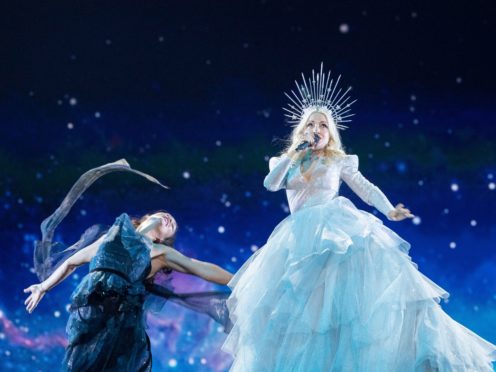Iceland’s Hatari and Australia’s Kate Miller-Heidke have qualified for the Eurovision Song Contest’s grand final following a high-energy semi-final in Tel Aviv.
Greece, Belarus, Serbia, Cyprus, Estonia, the Czech Republic, San Marino and Slovenia will also compete in the 26-strong event on Saturday.
A total of 17 international acts took to the stage on Tuesday night but only 10 moved on to the grand final following a 50-50 vote split between the public and an international jury.
Techno-punk group Hatari attracted much attention in the lead-up to this year’s contest with their darkly energetic track Hatrid Mun Sigra (Hatred Will Prevail).
The 10 finalists going through to the Grand Final of the Eurovision Song Contest on Saturday are:
🇬🇷 Greece🇧🇾 Belarus🇷🇸 Serbia🇨🇾 Cyprus🇪🇪 Estonia🇨🇿 Czech Republic🇦🇺 Australia🇮🇸 Iceland🇸🇲 San Marino🇸🇮 Slovenia#DareToDream #Eurovision pic.twitter.com/8YTnn4M6jH
— Eurovision (@Eurovision) May 14, 2019
They converted that into votes, although the number was not made public and the night’s 10 winners were announced in a random order.
Iceland has participated in Eurovision 31 times since its debut in 1986, missing two years and finishing twice second but never earning the top spot.
🇮🇸 BDSM, techno, performance artists Hatari sure know how to put on an incredible show!#DareToDream #Eurovision #ISL pic.twitter.com/kDIE1drBVM
— Eurovision (@Eurovision) May 14, 2019
Australia’s Kate Miller-Heidke, another favourite to win, also capitalised on a week of hype.
The vocalist’s operatic rendition of Zero Gravity, a song about her experience of postnatal depression, saw her flying through the air atop a pole, flanked by two backing vocalists.
Australia joined the Eurovision Song Contest in 2015 and has scored consistently well each year but never won.
🇦🇺 Has @kmillerheidke done enough for your vote? The Australian singer has performed Zero Gravity, but will you be sending her to the Grand Final? #DareToDream #Eurovision #AUS pic.twitter.com/9mfFx2eL2J
— Eurovision (@Eurovision) May 14, 2019
San Marino’s Serhat defied expectations to become only the second act from his nation to qualify for the final.
His song Say Na Na Na’s earworm chorus had been a fan favourite in the days leading up to the first semi-final.
Finland, however, was snubbed after Darude and Sebastian Rejman’s dance pop track Look Away failed to connect with an international audience.
WOW!!
What an incredible performance from @NettaBarzilai of her winning song "TOY"!#DareToDream #Eurovision pic.twitter.com/KIDw0BpN41
— Eurovision (@Eurovision) May 14, 2019
Earlier, Netta Barzilai – last year’s winner – started the event in her home nation with a rousing rendition of Toy, her Me Too anthem featuring bizarre chicken noises.
The UK, as one of the “big five” countries along with France, Germany, Italy and Spain, are already assured of a place in the grand final.
Last year’s winners Israel also do not have to qualify via the semi-finals.
UK residents could not vote in this round but will be able to during the 18-act second semi-final on Thursday and the grand final on Saturday.
